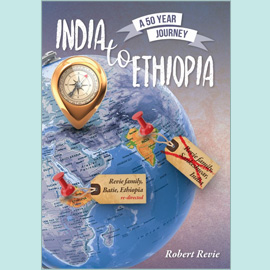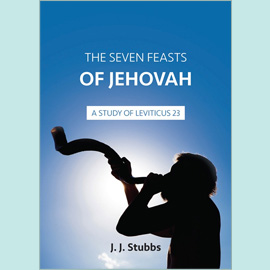It was Robert Moffat who really was the pioneer Scottish missionary into southern Africa. His name is less familiar than that of his more celebrated son-in-law (see last month’s article), but the legacy which has shaped missions in that part of the world over the past 150 years is really his. We can trace this in two important areas.
First, Moffat’s reports of the deep spiritual needs of the African people stirred and motivated Livingstone to go there, opening up much of the country for others as we have seen. Livingstone in turn informed and motivated a chain of others – through Fred Stanley Arnot to Dan Crawford, thence to Robert Allison and George Wiseman leading on to present day work in Angola and Botswana on the one hand, and on the other to Willie Lammond and Zambia to name but a few.
Second, he was the first to translate the Bible into a Bantu language of southern Africa, a critically important task. In spite of very limited early education, he learned Dutch among the Boers, then Setswana, so that he could communicate with the people to whom he had been sent. After years of painstaking labour he produced the Setswana New Testament in 1838 then the whole Bible in 1857. A revision of his translation is still widely used in Botswana today.
He was born in December, 1795 at Ormiston, some 10 miles east of Edinburgh.1 His father was a customs-house officer and they moved to Portsoy, Carronshore, and Inverkeithing during his early years. His parents taught him to pray and read the Bible and learn the "Shorter Catechism". His schooling was disjointed, and at Falkirk, after 6 months he ran away to sea when he was 11. Aged 14 he returned home a wiser lad, and found work as a gardener at Polmont, then at Donibristle in Fife, starting at 4am summer and winter for very little pay. After a year he went south to High Leigh in Cheshire for better pay and conditions, then to Dukinfield at the nursery garden of James Smith from Perthshire. Before he left home he promised his mother that he would read a chapter of the Bible every morning. He kept his promise.
Wesleyan Methodists invited him to some of their meetings. Convicted of his sin, after a long struggle he found pardon and peace through faith in Christ. He wanted now to devote his life to the service of his Lord. After a missionary meeting in Manchester he applied to the London Missionary Society, and he was "ordained" in Surrey Chapel at the age of 20 along with eight other young missionaries. One of these was John Williams who would go to the Pacific, and Moffat wanted to go there with him. But an old Scottish minister vetoed it with: "Thae twa lads are ower young to gang thegither".
So in October, 1816, Robert Moffat boarded the Alacrity bound for Cape Town, arriving in January, 1817. Before leaving he had become engaged to Mary Smith, his last employer’s daughter. She wished to accompany him, but her parents objected. Three years later she did come and marry him in Cape Town. Mary’s health was never robust but she supported him capably for the rest of her life.
Between 1817 and 1819 Moffat travelled through the new, turbulent British Cape Colony. He became renowned as a peacemaker, preaching among warring Boers, Zulus, Bushmen, Bantus, and Hottentots, though with little impact. But change came when Africaner, chief of the Hottentots, a notorious rebel with a reward of £300 on his head, was truly converted, to the amazement of the authorities! On seeing him, a pious old Boer farmer exclaimed, "O God, what a miracle of Thy power! What cannot Thy grace accomplish?".
During the arduous journey to Kuruman in Bechuanaland, south of the great Kalahari Desert, their little girl Mary was born. At the start of this new work the reception was hostile. The witchdoctor always blamed him for causing drought (in the desert!). One day the chief arrived with armed men and told him to get out. Mary with their baby in her arms watched as he faced the chief who had his spear in his hand, opened his shirt and said, "Now then, if you will, drive your spear to my heart; when you have slain me, my companions will know that the hour has come for them to depart". With a shake of his head the chief turned to his men and said, "These men must have ten lives when they are so fearless of death. There must be something in immortality".
After ten years Moffat could speak their language fluently and they came to trust him. But he was greatly burdened that his work seemed to be in vain. One Sunday he poured out his heart in prayer. When he began preaching the burden reached his hearers: strong men’s eyes filled with tears, many repented and turned to Christ. A new, larger church was opened in May, 1829. On the first Sunday of July, six were baptised and twelve shared the Lord’s Supper that evening. In 1831 a printing press came to Kuruman, to be well used in the coming years.2
King Mosilikatse, chief of the Matabele tribe to the east of Kuruman, sent for Moffat to preach to them. He said: "You have made my heart as white as milk. I cannot cease to wonder at the love of a stranger". But Moffat could not stay. He was needed at Kuruman and his translation work was pressing. He visited the Matabele again in 1835 and Mosilikatse facilitated his preaching. But soon afterwards the Matabele were driven north by the Zulus and contact was lost for about twenty years.
In 1839 Moffat took his first furlough - this is when David Livingstone became interested in Africa. Then he came back to Cape Town in April, 1843, and on to Kuruman, where they were welcomed by Livingstone now there, with 500 copies of the Setswana New Testament which had been printed in England. Livingstone would marry their daughter Mary in 1845.
In 1853 he found the Matabele settled near the River Zambezi. Mosilikatse was now an old man, unable to walk. Moffat was able to get him on his feet again and preach the gospel to his people. He had actually come with provisions for Livingstone and his family – which did not reach them until a year later after 20 Matabele tribesmen had carried them 150 miles farther north.
After Livingstone’s first return to England the LMS decided to send out expeditions to the Matabele and to the Makololo, on the north side of the Zambezi. In 1857, Moffat, at the age of 62, was asked to lead the expedition to the Matabele, involving a journey of 700 miles through difficult terrain. Thus a work was begun at Inyati with new missionaries, among whom was his own son John.
The Moffats suffered many trials. In 1862 their oldest son Robert died, about the same time as their daughter Mary, Livingstone’s wife. In 1865, Moffat was attacked by an angry native to the danger of his life. Then his son-in-law, a French missionary Jean Fredaux, was killed tragically, leaving a widow (Ann) and seven needy children. After 50 years’ service the LMS wanted him home as his health was failing. On March 20, 1870, he preached for the last time in Kuruman. Three months overland brought them to Cape Town, and six months later to England to be welcomed by their daughter Helen whom they had not seen for 27 years.
But Mrs Moffat felt a stranger here. She kept remembering her real home in the African sun, so different from foggy England, and her people there were much more loving and lovable. There she had been mother to them all; here she was a strange old woman! Within six months she caught cold and died after a short illness.
Robert Moffat, now a patriarchal figure with a flowing white beard, spoke frequently to large crowds of young and old, graphically describing his many experiences in Africa. He received many honours including special audiences with Queen Victoria and several eminent statesmen. In 1874 when the body of Livingstone was brought to England, he escorted it to London and attended the grand funeral service in Westminster Abbey.
On Thursday evening, August 9, 1883, in a little house in Brixton, this pathfinder for missionaries into southern Africa, "Moshete of the Bechuanas" as he was known, the friend of the great king Mosilikatse of the Matabeles, and of Cetewayo of the Zulus, the father-in-law of David Livingstone, and the respected spiritual father of many, died and was buried beside his wife in Norwood Cemetery, London.3
1 His memorial at Ormiston, erected in 1885, contains this later tribute by Field Marshal Smuts: "Among missionaries there was none greater, none holier than he".
2 This press can still be seen with other artifacts in a small museum at Kuruman.
3 More details of this remarkable story can be found at www.wholesomewords.org/missions/bmoffat3.html.









